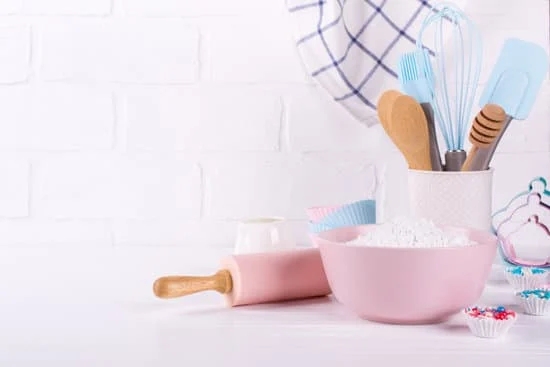Whip cream frosting for cake decorating is a versatile and light option that adds a deliciously airy texture to your creations. This type of frosting is popular for its smooth, creamy consistency and ability to hold intricate designs when decorating cakes. Whether you’re piping beautiful rosettes or creating intricate borders, whip cream frosting offers endless possibilities for elevating your desserts.
Originally gaining popularity in the 19th century, whip cream frosting has stood the test of time and continues to be a favorite among bakers and decorators alike. Its origins can be traced back to European confectionery traditions, where the use of whipped cream in desserts became a symbol of elegance and refinement. Over the years, this frosting has evolved to become a staple in cake decorating due to its versatility and appeal.
One of the key benefits of using whip cream frosting is its lower sugar content compared to other types of frostings, making it a lighter option for those looking to indulge without overwhelming sweetness. Additionally, its natural flavor allows for easy customization with different extracts or flavorings to suit your taste preferences.
In the upcoming sections, we will delve into the history of whip cream frosting, how to make it from scratch at home, tips for decorating cakes with this luscious topping, and more.
History of Whip Cream Frosting
Whip cream frosting has a rich history that dates back centuries, tracing its origins to the early days of baking and dessert-making. Originally known as “Chantilly cream” in France, this light and airy frosting was typically made by whipping heavy cream with sugar until it reached a fluffy consistency. Over time, bakers and pastry chefs around the world began experimenting with different ingredients and techniques to enhance the flavor and texture of whip cream frosting.
The Evolution of Whip Cream Frosting:
- In the 19th century, the invention of mechanical mixers revolutionized the process of making whip cream frosting, making it easier and quicker to achieve the desired consistency.
- The addition of stabilizers like gelatin or cornstarch helped whip cream frosting hold its shape better, allowing for more intricate designs and decorations on cakes.
- With advancements in technology and modern refrigeration methods, whip cream frosting became more accessible and popular among home bakers, leading to a resurgence in its use for cake decorating.
Cultural Significance:
Whip cream frosting has become a staple in many cultural celebrations and holidays around the world. In countries like Mexico, Tres Leches cake topped with whip cream frosting is a traditional dessert served during special occasions like birthdays and weddings.
In Japan, light sponge cakes filled with fruit and covered in whip cream frosting are popular treats enjoyed during cherry blossom season. The versatility of whip cream frosting has allowed it to adapt to various culinary traditions while retaining its signature lightness and sweetness.
Benefits of Using Whip Cream Frosting
Whip cream frosting, also known as whipped cream or chantilly cream, offers a delightful alternative to traditional buttercream frostings. Its light and airy texture adds a fluffy touch to cakes, cupcakes, and other baked goods.
One of the key advantages of using whip cream frosting is its lower sugar content compared to buttercream, making it a lighter option for those looking to enjoy a sweet treat without an overwhelming sugary taste. Additionally, whip cream frosting boasts a natural flavor that pairs well with various cake flavors, allowing the true essence of the cake to shine through.
When it comes to decorating cakes with whip cream frosting, the possibilities are endless. Whether you’re looking to create elegant rosettes, intricate borders, or whimsical designs, this versatile frosting can be easily manipulated to achieve your desired look.
Piping techniques such as swirls and ruffles can be effortlessly executed with whip cream frosting, adding a touch of sophistication to any cake design. Moreover, the soft consistency of whip cream frosting makes it ideal for creating smooth finishes or textured patterns on cakes for a visually appealing presentation.
In addition to its aesthetic appeal, whip cream frosting offers a refreshing taste that complements a wide range of cake flavors. While classic vanilla is always a crowd-pleaser, you can experiment with flavored variations such as chocolate, strawberry, or lemon to add an extra layer of excitement to your cakes.
These flavored options not only enhance the overall taste profile of your desserts but also provide endless opportunities for creativity in cake decorating. So whether you’re a novice baker or experienced pastry chef, whip cream frosting opens up a world of possibilities for creating beautiful and delicious cakes that are sure to impress any audience.
How to Make Whip Cream Frosting
Whip cream frosting is a delightful addition to any cake, offering a light and airy texture that enhances the overall taste and appearance of your baked creations. Making whip cream frosting at home is not only satisfying but also allows you to customize the flavor to suit your preferences. Whether you are a beginner or an experienced baker, mastering the art of whip cream frosting can elevate your cake decorating skills to the next level.
Ingredients Needed
To make whip cream frosting at home, you will need simple ingredients that are easily accessible in most kitchens. The basic ingredients include heavy whipping cream, powdered sugar, and vanilla extract for flavoring. Additionally, for stability, you can include gelatin or cornstarch to prevent deflation and maintain the desired consistency of the frosting.
Step-by-Step Guide
Begin by chilling your mixing bowl and whisk attachment in the freezer for about 15 minutes before starting. This helps create a cold environment that is essential for achieving stiff peaks when whipping the cream. Once chilled, pour the heavy whipping cream into the bowl and start mixing on medium speed until it begins to thicken.
Gradually add in powdered sugar and vanilla extract while continuing to mix until stiff peaks form. Be careful not to overmix as it can lead to curdling or deflation of the frosting.
Tips and Tricks
To achieve the perfect consistency for your whip cream frosting, it’s important to monitor the mixing process closely. Avoid overheating or overbeating the mixture as it can cause the cream to become grainy or deflate quickly.
Incorporating flavors like cocoa powder, fruit purees, or instant coffee granules can add depth and complexity to your whip cream frosting for cake decorating applications. Experiment with different ratios of ingredients until you find the ideal balance of sweetness and stability that suits your taste preferences and decorating needs.
Decorating Cakes With Whip Cream Frosting
Piping Technique
One of the most popular ways to decorate cakes with whip cream frosting is by using the piping technique. This involves filling a piping bag with the frosting and creating intricate designs or patterns on the cake’s surface.
Whether you’re looking to add delicate swirls, stars, or even written messages, piping allows for endless creativity. To ensure better control and precision when piping, it’s important to practice your technique on parchment paper before moving onto the cake itself.
Rosettes and Flowers
Another delightful way to elevate your cake decoration with whip cream frosting is by crafting rosettes and flowers. Using a star-shaped decorating tip, you can create beautiful rosettes that add a touch of elegance to any cake. For floral decorations, consider using various petal tips to achieve different flower shapes and sizes. Whether you opt for a simple daisy or an elaborate rose design, floral decorations made with whip cream frosting can bring your cake to life.
Borders and Textures
Borders play a crucial role in framing the edges of your cake while adding visual interest. With whip cream frosting, you can easily create borders of different styles, from ruffled edges to scalloped designs. Additionally, playing with textures like smooth finishes, basketweave patterns, or even shell borders can enhance the overall appeal of your cake. Experimenting with different border techniques will not only showcase your skills but also elevate the presentation of your delicious creation.
Flavored Whip Cream Frosting
One of the delightful aspects of whip cream frosting is its versatility and ability to be infused with various flavors, enhancing the overall taste of your cake. By incorporating different flavor variations, you can elevate your cake decorating game and cater to a wide range of tastes.
One popular option is chocolate whip cream frosting, which adds a rich and decadent touch to any dessert. The luscious combination of cocoa and whip cream creates a smooth and creamy texture that pairs exceptionally well with chocolate cakes or as a filling in layered cakes.
For those who prefer fruitier profiles, strawberry whip cream frosting is a delectable choice that imparts a refreshing burst of flavor. Made by adding fresh strawberry puree or extract to the whip cream base, this variation brightens up cakes with its vibrant pink hue and sweet-tart taste. Strawberry whip cream frosting is perfect for spring and summer-themed desserts or as an accompaniment to vanilla or lemon-flavored cakes.
Another citrusy twist on traditional whip cream frosting is lemon-flavored whip cream frosting. The zesty notes of lemon zest or extract combined with the lightness of whipped cream create a harmonious balance of sweet and tangy flavors. This option works well on pound cakes, angel food cakes, or as a filling between layers in citrus-inspired creations. Experimenting with different flavor variations of whip cream frosting allows you to customize your cakes according to personal preferences and occasions.
| Flavor Variation | Description |
|---|---|
| Chocolate | Rich and decadent cocoa flavor ideal for chocolate cakes. |
| Strawberry | Fruity profile with fresh strawberry puree for vibrant pink color. |
| Lemon | Citrusy twist with lemon zest or extract for sweet-tangy taste. |
Storing and Serving Whip Cream Frosting Cakes
Storing and serving cakes frosted with whip cream frosting require particular care to ensure that the desserts maintain their freshness and presentation. Whip cream, being a delicate ingredient, needs specific conditions to stay stable and appealing. One essential tip for storing cake frosted with whip cream frosting is to keep it refrigerated. The cooler temperature helps the whip cream frosting retain its form, preventing it from melting or deflating.
Another crucial aspect of storing cakes with whip cream frosting is to shield them from direct sunlight or heat sources. Exposure to warmth can cause the whip cream frosting to lose its texture and firmness, leading to a less visually appealing cake. To preserve the cake’s appearance, store it in a cool place away from any heat-emitting appliances or areas in the kitchen.
When it comes to serving cakes with whip cream frosting for maximum impact, consider chilling the dessert until shortly before serving. This ensures that the whip cream maintains its shape while also providing a refreshing sensation when consumed. Additionally, decorating the cake with fresh fruits, chocolate shavings, or edible flowers can enhance its visual appeal and add extra flavor dimensions to each slice.
| Whip Cream Frosting Tip | Description |
|---|---|
| Refrigeration | Keep cakes frosted with whip cream frosting refrigerated to maintain stability. |
| Avoid Heat Sources | Store cakes away from direct sunlight or heat sources to prevent melting. |
| Serve Chilled | Chill cakes until just before serving for optimal texture and freshness. |
Troubleshooting Common Issues With Whip Cream Frosting
In conclusion, whip cream frosting is a fantastic option for cake decorating due to its light and airy texture, versatility, and natural flavor profile. By understanding the history of whip cream frosting and its evolution over time, we can appreciate the artistry and skill that goes into creating this delectable topping. The benefits of using whip cream frosting are numerous, from its lower sugar content to the endless possibilities of flavors that can be incorporated.
When it comes to making whip cream frosting at home, following a detailed step-by-step guide is essential to achieving the perfect consistency. Additionally, knowing how to troubleshoot common issues like deflation or melting can save you from potential disasters in your cake decorating endeavors. With techniques like piping, rosettes, and borders, decorating cakes with whip cream frosting opens up a world of creativity for both amateur bakers and experienced pastry chefs alike.
As you explore flavored variations of whip cream frosting such as chocolate, strawberry, or lemon, remember that storing cakes frosted with this delicate topping requires special care to maintain freshness and presentation. By mastering the art of serving these beautifully decorated cakes, you can truly impress your guests with both taste and aesthetics. In summary, whip cream frosting is not just a topping – it is a tool for innovation and creativity in the world of cake decorating.
Frequently Asked Questions
Can You Use Whipped Cream Frosting to Decorate a Cake?
Whipped cream frosting can be used to decorate a cake, but it is important to keep in mind that it may not hold its shape as well as buttercream or fondant. It is best for more casual or light desserts due to its delicate texture.
How Do You Stiffen Whipped Cream for Piping?
Stiffening whipped cream for piping requires some tricks such as using cold utensils, chilling the cream and bowl before whipping, and adding stabilizers like powdered sugar or gelatin. Be careful not to overwhip to prevent curdling.
How Long Does Whipped Cream Frosting Last on a Cake?
The longevity of whipped cream frosting on a cake depends on various factors such as the temperature of the environment it’s stored in, the ingredients used in the frosting, and whether any stabilizers were added. Generally, it is recommended to consume within 1-2 days for best quality.

Welcome to our cake decorating blog! My name is Destiny Flores, and I am the proud owner of a cake decorating business named Cake Karma. Our mission is to provide delicious, beautiful cakes for all occasions. We specialize in creating custom cakes that are tailored specifically to each customer’s individual needs and tastes.





